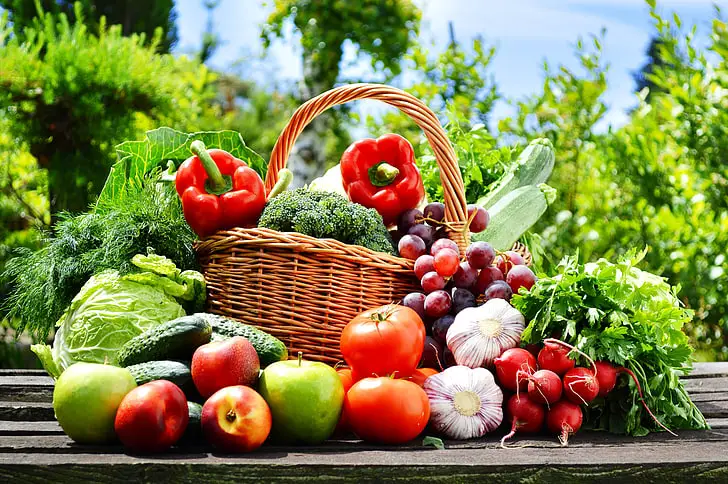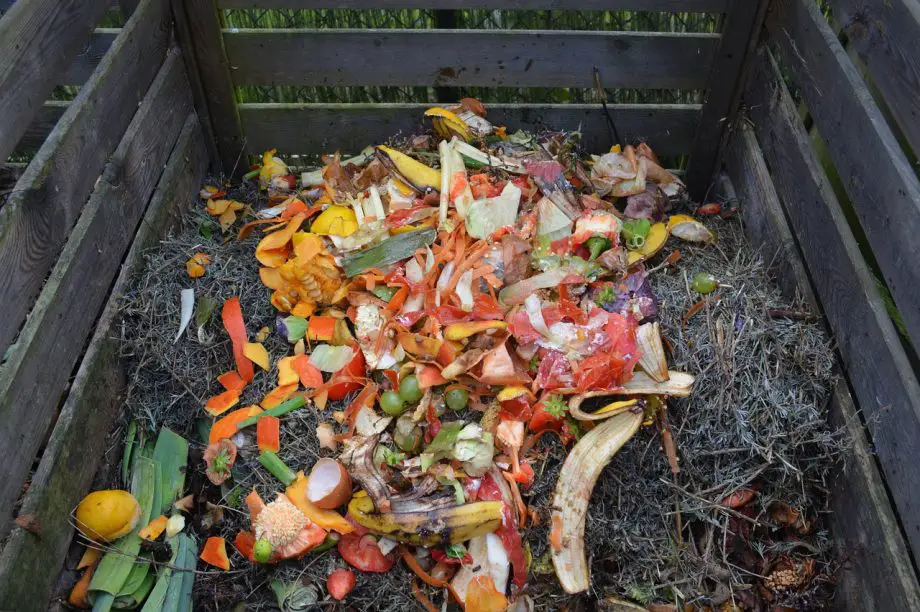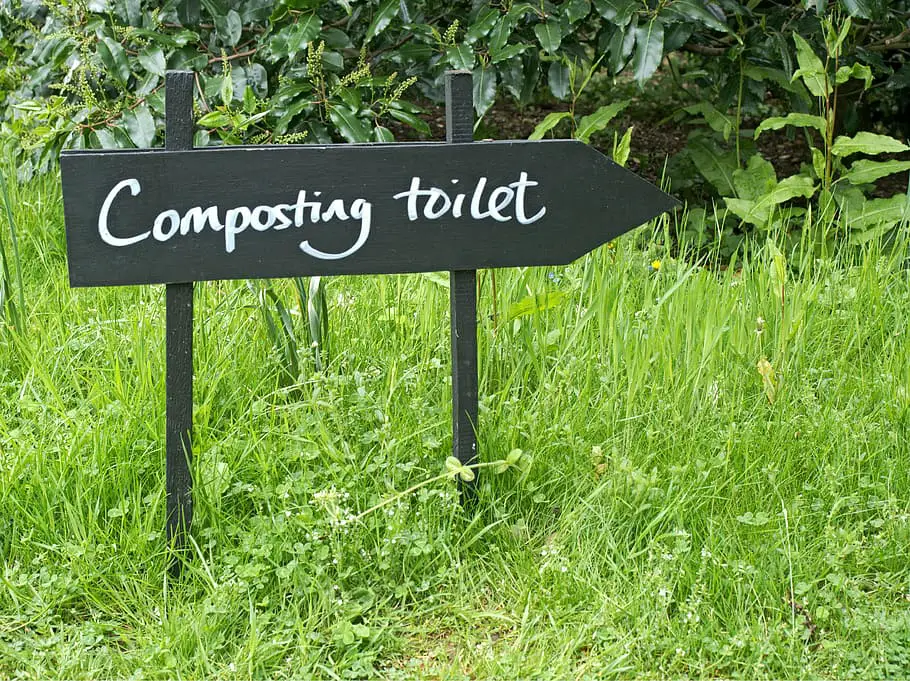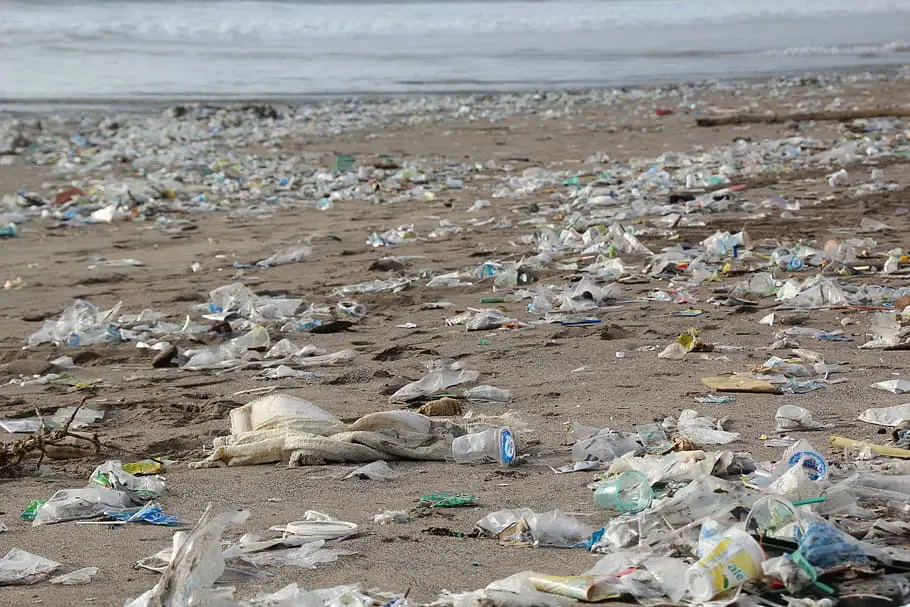
Discover simple, effective ways on how to reduce food waste at home. Join us as we explore meal planning, composting, and more for a sustainable lifestyle.
Ever wondered how you could make a positive impact on the environment right from your kitchen?
Well, the answer lies in learning how to reduce food waste at home. It’s not just about being eco-conscious, it’s also about embracing a smarter, more sustainable lifestyle.
From meal planning to creative cooking, we’re going to dive into some practical and effective strategies that can help you minimize food waste, save money, and contribute to a healthier planet.
So, let’s embark on this journey together, shall we?
How to Reduce Food Waste at Home
Are you ready to make a difference right from your kitchen? Let’s talk about how to reduce food waste at home.
In this journey, we’ll explore everything from understanding what food waste really is, to practical steps like smart shopping, proper food storage, and even composting.
We’ll also delve into creative ways to use every bit of your food, and how you can spread the word to make a bigger impact.
This isn’t just about reducing waste, it’s about embracing a lifestyle that’s good for you, your wallet, and our planet. So, let’s get started, shall we?
In this article, we’re going to take a deep dive into the world of reducing food waste.
We’ll start by understanding what food waste really is and look at some eye-opening statistics.
Then, we’ll move on to practical strategies you can implement right away, from planning and organizing your meals to storing food correctly.
We’ll also explore creative ways to use all parts of your food and how to compost at home.
Plus, we’ll talk about how you can donate excess food and educate others about food waste. And of course, we’ll answer some frequently asked questions.
So, whether you’re just starting out on your food waste reduction journey or looking for more tips, there’s something here for everyone.
Let’s get started!
Understanding Food Waste
Before we dive into the practical steps of reducing food waste, let’s take a moment to really understand what we’re dealing with.
Food waste might seem like a straightforward concept, but there’s more to it than meets the eye.
It’s not just about the leftovers that end up in the trash. It’s about the resources wasted, the impact on our environment, and the missed opportunities to feed those in need.
So, in this section, we’re going to unravel the complexities of food waste, backed by some hard-hitting statistics.
Ready to get enlightened? Let’s dive in!
Definition of Food Waste
Let’s start with the basics. What exactly is food waste? Well, it’s any food that was produced for consumption but never gets eaten.
This could be the bread that goes stale, the fruits that rot in your fruit bowl, or the leftovers from dinner that you never get around to eating.
It also includes food that gets lost or spoiled during production, processing, and distribution.
It’s a global issue that affects all of us, from the individual consumer to large corporations.
And the first step to tackling it is understanding it.
Statistics on Food Waste at Home
Now, let’s put this into perspective with some numbers. Did you know that an average American household throws away about $1,600 worth of food each year?
That’s a significant amount of money that could be saved. Globally, about one-third of all food produced for human consumption is wasted.
That’s approximately 1.3 billion tonnes of food! And here’s another shocking fact.
If food waste were a country, it would be the third-largest emitter of greenhouse gases, after China and the US.
These statistics highlight the scale of the problem and underscore why it’s so important for each of us to take action to reduce food waste at home.
Wasted Food Data
The study, published in the American Journal of Agricultural Economics, found that the average U.S. household wasted 31.9% of its food. The total annual cost of wasted food was estimated to be $240 billion or $1,866 per household. The data came from the U.S. Department of Agriculture’s National Household Food Acquisition and Purchase Survey (FoodAPS) and included 4,000 households. From Forbes
Planning and Organizing
Now that we’ve got a handle on what food waste is and the scale of the problem, let’s roll up our sleeves and get into the nitty-gritty of reducing it.
And it all starts with some good old planning and organizing.
You see, a lot of food waste happens because we buy more than we need or simply forget what we have in our fridges and pantries.
But with a little bit of planning and some smart organizing tricks, we can make sure we’re only buying what we’ll actually eat and using it before it goes bad.
So, are you ready to become a master planner and organizer in your kitchen? Let’s dive in!
Importance of Meal Planning
Meal planning is like the secret weapon in the fight against food waste.
Think about it. When you plan your meals for the week, you know exactly what ingredients you need.
This means you’re less likely to buy things you won’t use and more likely to use up what you have.
Plus, it takes the stress out of figuring out what to cook each day. And the best part?
It can also help you eat healthier and save money. So, if you’re not already meal planning, it’s definitely worth giving it a shot.
Shopping Smart: Buying Only What You Need
We’ve all been there. You go to the store for a few items and come back with a cart full of groceries.
It’s easy to get tempted by sales and special offers, but buying more than you need often leads to food waste.
That’s why shopping smart is so important. Make a list based on your meal plan and stick to it.
Try to resist the urge to buy extra, especially for perishable items. And remember, it’s okay to run out of things and it’s much better than throwing food away.
FIFO Method: First In, First Out
Here’s a simple yet effective trick to manage your food at home, the FIFO method, which stands for First In, First Out.
The idea is to use up the older items in your fridge, freezer, or pantry before the new ones.
This way, you’re less likely to find a forgotten bag of salad leaves turning into slime at the back of your fridge.
So, when you unpack your groceries, put the new items at the back and bring the older ones to the front.
It’s a small change that can make a big difference in reducing food waste.
Proper Food Storage
Alright, we’ve planned our meals, shopped smart, and we’re using our food in the order we bought it. Great job!
But there’s another crucial piece of the puzzle when it comes to reducing food waste and that’s proper food storage.
You see, how you store your food can significantly impact how long it lasts and how good it tastes.
And let’s be honest, nobody likes discovering a shriveled-up bell pepper or a moldy piece of cheese in their fridge.
So, in this section, we’re going to explore how to store different types of food to keep them fresh for longer.
Ready to become a food storage pro? Let’s get started!
Correct Ways to Store Different Types of Food
Storing food correctly is a bit of an art, but once you get the hang of it, it can make a big difference in reducing food waste.
For instance, did you know that not all fruits and veggies get along?
Some, like apples and bananas, give off gases as they ripen which can cause other produce to spoil faster.
So, it’s best to store them separately. And then there are items like potatoes, onions, and garlic that prefer a cool, dark, and well-ventilated space.
As for bread, it’s best kept on the counter for up to four days and then in the freezer.
These are just a few examples, but the key takeaway is that understanding the storage needs of different foods can help you keep them at their best for longer.
The Role of Refrigeration and Freezing in Reducing Food Waste
Now, let’s talk about the dynamic duo of food storage, your fridge, and freezer.
Your refrigerator is great for keeping fresh produce, dairy, and leftovers.
But to make the most of it, it’s important to keep it at the right temperature.
The recommended temperature range for a refrigerator in Fahrenheit is between 33.8°F and 41°F or between 1°C and 5°C.
Anything higher and your food could spoil faster. As for your freezer, it’s like a pause button for your food.
Got some leftover soup or a loaf of bread you won’t finish in time? Into the freezer, they go.
Just remember to package foods properly to prevent freezer burn and to label them with the date.
With these two on your side, you can significantly extend the life of your food and reduce waste.
Creative Cooking
Now, here’s where things get really fun, creative cooking!
This is all about seeing the potential in every part of your food and turning those odds and ends into delicious meals.
It’s about looking at that half onion, those wilting herbs, or that leftover roast chicken and seeing possibilities instead of waste.
And trust me, it’s not just good for reducing food waste, it’s also a great way to discover new flavors and recipes.
So, are you ready to unleash your creativity in the kitchen? Let’s get cooking!
Using Every Part of the Food: Stems, Leaves, Peels, etc.
You know, there’s a certain satisfaction in using every part of the food.
It’s like solving a puzzle, where each piece has a role to play.
Take broccoli, for example. The stems are just as delicious as the florets and can be used in stir-fries, soups, or even slaw.
Or those carrot tops. Did you know they make a great pesto?
And don’t even get me started on potato peels. Tossed with a little oil, salt, and your favorite spices, then roasted in the oven, they turn into a delicious snack.
The point is, many parts of our food that we often discard are not only edible but also packed with flavor and nutrients.
So next time, before you toss something in the compost bin, take a moment to consider if it could have a starring role in your next meal.
Recipes That Use Leftover Food
Leftovers can be a real lifesaver on busy days, but eating the same thing several days in a row can get a bit boring.
That’s where a little creativity comes in. Leftover roast chicken can be turned into a comforting chicken salad or a hearty chicken soup.
That half can of chickpeas can be whipped up into a quick hummus or tossed into a salad.
And those overripe bananas are just begging to be turned into banana bread or smoothies.
The internet is full of recipes that can help you turn your leftovers into delicious new meals.
So, don’t look at your leftovers as repeats, but as opportunities for new culinary adventures.
Composting
Let’s move on to a topic that’s close to my heart, composting. Now, I know what you might be thinking. Composting?
Isn’t that something only hardcore gardeners or farmers do? But hear me out.
Composting is a fantastic way to reduce food waste, and it’s something anyone can do, even if you live in a small apartment.
Plus, it’s like magic. You take your kitchen scraps, add a bit of time, and voila, you get rich, nutrient-dense compost that your plants will love.
So, are you ready to turn your food waste into black gold? Let’s dig in!
What is Composting?
So, let’s start with the basics. What is composting? In simple terms, composting is a natural process that turns organic material, like your kitchen scraps, into a nutrient-rich soil conditioner.
It’s nature’s way of recycling. Microorganisms break down the organic material into a dark, crumbly substance that’s great for improving soil health.
And while it might sound complicated, it’s actually a pretty straightforward process.
All you need is a mix of ‘greens’ (like vegetable peels, coffee grounds, or grass clippings) for nitrogen, ‘browns’ (like dried leaves, paper, or straw) for carbon, some water, and a bit of time.
How to Compost at Home
Now, how do you compost at home? Well, there are a few different methods, but one of the simplest is to start a compost pile or bin in your backyard.
Start with a layer of browns for aeration and drainage, then add a layer of greens, and keep alternating.
Turn the pile every few weeks to help it decompose evenly.
Indoor Composting
If you don’t have outdoor space, don’t worry. You can compost indoors using a special bin with a tight-fitting lid.
Or you could try vermicomposting, which uses worms to break down the scraps.
And remember, not all food waste can go into the compost.
Avoid meat, dairy, and diseased plants as they can attract pests or create unpleasant odors.
With a bit of practice, you’ll be a composting pro in no time!
Bokashi is another excellent method for composting at home, especially for those who don’t have a lot of space.
Bokashi is a Japanese term that means fermented organic matter.
It’s a method of composting that uses a specific group of microorganisms to anaerobically ferment kitchen waste, including things that can’t usually be composted at home like meat and dairy.
You’ll need a special Bokashi bin and Bokashi bran, which is packed with beneficial microorganisms.
You add your kitchen scraps to the bin, sprinkle on some Bokashi bran, and seal the bin.
The microorganisms get to work, fermenting the waste.
When the bin is full, you seal it and set it aside for a couple of weeks to let the fermentation process complete.
The end result is a type of compost that can be mixed directly into your garden soil or used as a compost tea for your plants.
It’s a quick, odor-free method of composting that’s great for small spaces.
Donating Excess Food
Now, let’s talk about another powerful way to reduce food waste, donating excess food.
We’ve all had those moments where we’ve ended up with more food than we can possibly eat.
Maybe you got a little overzealous at the farmers market, or you cooked for a crowd and the crowd was smaller than expected.
Instead of letting that food go to waste, why not share it with someone who could really use it?
Donating your excess food is a win-win situation. You reduce waste and someone else gets a meal.
Ready to learn more? Let’s dive in!
Where and How to Donate Excess Food
Donating excess food is easier than you might think.
There are many food banks, shelters, and community organizations that would be happy to take your unneeded food.
Some places accept perishable items like fresh produce or dairy products, while others can only take non-perishable items like canned goods.
It’s best to call ahead and check what they accept. There are also food rescue organizations that pick up excess food from businesses and deliver it to charities.
And don’t forget about informal ways of donating food, like sharing with your neighbors, friends, or family.
Remember, safety first. Only donate food that is still good to eat.
Benefits of Donating Food
Donating food has numerous benefits. First and foremost, it helps feed those in need.
But the benefits don’t stop there. By donating food, you’re reducing waste, which in turn helps conserve the resources used to produce that food.
It can also save you money on waste disposal costs. Plus, it feels good to know that your excess food is going to someone who can use it, rather than ending up in the landfill.
So, the next time you find yourself with more food than you can eat, consider donating it. It’s a small act that can make a big difference.
Educating Others
We’ve covered a lot of ground so far, from understanding food waste to practical strategies for reducing it.
But there’s one more piece to the puzzle and that’s educating others.
You see, reducing food waste isn’t just a solo mission. It’s a team effort.
The more people know about the issue and how to tackle it, the bigger impact we can make.
So, in this section, we’re going to talk about how you can spread the word and inspire others to join the fight against food waste.
Ready to become a food waste warrior? Let’s go!
Importance of Spreading Awareness About Food Waste
Spreading awareness about food waste is crucial. Why? Because many people simply don’t realize the scale of the problem or how their actions contribute to it.
They might not know that a third of all food produced globally is wasted, or that food waste is a major contributor to climate change.
And they might not be aware of all the simple ways they can reduce food waste at home.
By spreading awareness, we can help others understand the issue and inspire them to take action.
And the more people take action, the bigger impact we can make.
It’s like a ripple effect. Your actions can inspire others, who inspire others, and so on.
How to Educate Others About Reducing Food Waste
So, how can you educate others about reducing food waste?
There are many ways. You could share what you’ve learned with your friends, family, or coworkers.
You could post about it on social media, or write a blog post or an article.
If you’re involved in a community group or a school, you could organize a talk or a workshop.
You could even host a cooking class or a dinner where you show how to use up leftovers or cook with ‘ugly’ produce.
The key is to make it engaging and relevant. Show people that reducing food waste is not only good for the planet, but can also save them money and lead to delicious meals.
And remember, every conversation counts. You never know who you might inspire!
FAQs
We’ve covered a lot of ground in our journey to reduce food waste at home.
But you might still have a few questions brewing in your mind. And that’s great!
Questions lead to better understanding and more effective action. So, in this section, we’re going to tackle some of the most frequently asked questions about reducing food waste.
From practical tips to broader queries, we’ve got you covered. Ready to quench your curiosity? Let’s dive into the FAQs!
Q: How can people reduce food waste at home?
A: Reducing food waste at home can be achieved through a few simple steps.
• Start with meal planning and smart shopping, buying only what you need.
• Store your food properly to extend its life and use up leftovers in creative ways.
• Compost your kitchen scraps, and if you have excess food, consider donating it.
• Lastly, educate others about the importance of reducing food waste.
Q: What are 5 ways to reduce food waste?
A: Here are five effective ways to reduce food waste:
• Meal Planning: Plan your meals for the week and make a shopping list to avoid buying more than you need.
• Smart Shopping: Stick to your list when you go shopping and resist the temptation to overbuy.
• Proper Food Storage: Store your food correctly to keep it fresh for longer.
• Use Leftovers: Get creative with your leftovers and turn them into new meals.
• Compost: Compost your kitchen scraps to reduce waste and create nutrient-rich soil for your plants.
Q: What are 10 ways to save food?
A: Here are ten ways to save food:
• Meal Planning
• Smart Shopping
• Proper Food Storage
• Using Leftovers
• Composting
• FIFO Method: Use older items first.
• Use All Parts of the Food: Don’t discard edible parts like stems or leaves.
• Freeze Excess: If you have food you won’t use in time, freeze it.
• Donate Excess Food: If you have more food than you can eat, donate it.
• Educate Others: Spread the word about reducing food waste.
Q: What are two ways a household could reduce the amount of food waste?
A: Two effective ways a household can reduce food waste are through meal planning and proper food storage.
Meal planning helps you buy only what you need, reducing the chance of food going bad before you can eat it.
Proper food storage ensures that your food stays fresh for as long as possible, giving you more time to eat it before it spoils.
How to Reduce Food Waste at Home Conclusion
Well, we’ve come a long way on our journey to reduce food waste at home.
We’ve explored everything from understanding the issue to practical strategies and tips to tackle it.
But as we wrap things up, it’s important to remember that reducing food waste isn’t a one-time thing.
It’s a continuous journey of learning, adapting, and making small changes that add up over time.
So, as we head into our conclusion, let’s take a moment to reflect on what we’ve learned and look forward to the positive impact we can make. Ready? Let’s wrap things up!
Recap of the Main Points
We started our journey by understanding what food waste is and the staggering statistics that highlight the scale of the problem.
We then moved on to practical strategies to reduce food waste at home, starting with meal planning and smart shopping.
We learned about the importance of proper food storage and the role of refrigeration and freezing.
We got creative with cooking, learning to use every part of our food and discovering delicious recipes for leftovers.
We explored composting and how it’s a fantastic way to turn kitchen scraps into nutrient-rich compost.
We also discussed the importance of donating excess food and how it benefits not just those in need but also helps reduce waste.
Lastly, we emphasized the importance of educating others about food waste and answered some frequently asked questions.
Final Thoughts on the Importance of Reducing Food Waste at Home
Reducing food waste at home is more than just a good habit. It’s a powerful way each of us can contribute to a more sustainable lifestyle and equitable world.
Every bit of food we save is a step towards conserving resources, combating climate change, and ensuring everyone has enough to eat.
It’s a journey that starts in our kitchens but has the potential to reach far beyond.
So, let’s keep learning, keep improving, and most importantly, keep reducing food waste. Because every bit counts.
Read more: How To Start A Zero Waste Lifestyle: 9 Easy Steps






